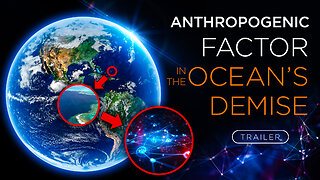Premium Only Content

Saudi Arabia NOW! From Desert to Floods. Climate Crisis Unfolds in August 2024
In late August, heavy rains struck Saudi Arabia, causing severe flooding along the Red Sea coast. Social media has been flooded with images and videos showing submerged city streets, roads, and cars stuck in the water.
On August 30, the National Center for Meteorology in Saudi Arabia issued a red alert. Earlier, the Saudi Civil Defense warned residents about the risk of strong winds, thunderstorms, hail, and reduced visibility.
The western and southwestern regions of the country were the hardest hit by the sudden floods. Near the city of Al Lith, close to the Red Sea coast, two bodies were found in the Wadi Dahab area.
In the Medina region, floods swept away cars, creating additional challenges for local residents and rescue services.
Due to the threat of flooding, thousands of workers were dispatched to the Al-Masjid an-Nabawi, Prophet's Mosque, in Medina and the Masjid al-Haram in Mecca, where the Kaaba, Islam’s holiest site, is located. They monitored water levels and provided assistance in managing the rainfall. These efforts allowed worshippers to continue their religious rituals safely despite the harsh weather.
The rains also affected the central regions of the country. Authorities urged residents to remain vigilant, follow updates from the meteorological service, and strictly adhere to safety precautions as the flood risk persists. Rainfall is expected to continue until Tuesday.
It is worth noting that the previous flood in Saudi Arabia occurred just over a week ago. Local media reported that Medina received a year’s worth of rainfall in a single day, leading to catastrophic flooding.
Saudi Arabia is generally considered an arid country with a desert climate, where scarce rainfall typically occurs during the winter months. However, in recent years, the situation has changed dramatically. Abnormally heavy rains, thunderstorms, and hail have become frequent even in summer. In the deserts, camels can now often be seen struggling against raging torrents that have flooded once-dry lands.
It is evident that climate-related disasters are escalating much faster than previously anticipated, posing a significant threat to the well-being and lives of people around the world. Now, the pressing question for humanity is: what can we do to tackle these challenges?
The answer lies in actively deploying modern technologies that have already proven their effectiveness but have yet to be widely adopted. For example, using atmospheric water generators could significantly influence rainfall patterns and distribution by reducing atmospheric moisture content, thereby decreasing the frequency and severity of floods.
For more information, check out the documentary film “Water from Air: The Path to Saving Humanity”.
-
 1:57
1:57
AllatRa TV
13 days agoANTHROPOGENIC FACTOR IN THE OCEAN’S DEMISE | Trailer
1562 -
 11:08
11:08
China Uncensored
8 hours agoXi Jinping's Greatest Fear
12K9 -
 LIVE
LIVE
I_Came_With_Fire_Podcast
13 hours agoFar Left TROJAN HORSE | SPECIAL Forces in MEXICO | GERMANY under FIRE
219 watching -
 1:41:00
1:41:00
Darkhorse Podcast
10 hours agoIf Only We’d Known: The 265th Evolutionary Lens with Bret Weinstein and Heather Heying
115K34 -
 1:58:29
1:58:29
Conspiracy Pilled
3 days agoThe Vaccine Conversation (S5 - Ep17)
43.8K1 -
 11:22
11:22
Tundra Tactical
7 hours ago $3.30 earnedUSA vs Canada HOCKEY Fight: The Real PRIDE Fighting.
52K6 -
 54:43
54:43
LFA TV
1 day agoWhy Exposing Waste and Fraud Terrifies the Beltway | TRUMPET DAILY 2.19.25 7PM
49.2K5 -
 1:01:13
1:01:13
Candace Show Podcast
8 hours agoBlake Lively's BOMBSHELL Legal Filing | Candace Ep 149
119K139 -
 1:11:22
1:11:22
Vigilant News Network
11 hours agoElon Musk Shuts Down RFK Jr. Critics With One Powerful Statement | The Daily Dose
79.1K28 -
 1:12:23
1:12:23
Dad Dojo Podcast
23 hours ago $2.13 earnedEP20: The Super Bowl and Solving The Economy
45.5K